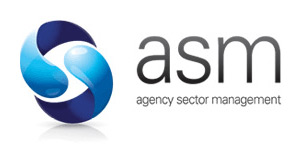NCTS5 - Multiple House Consignments
On 21 January 2025, all National Administrations that are members of the Common Transit Convention (CTC) will implement the final version of NCTS Phase 5. These are known as Final State Rules.
What is changing?
During the current transition period to 21 January 2025, you cannot enter multiple Consignors at Consignment item level. Instead, you need to leave the Consignor details blank and enter all Consignee information at item level.
From 21 January 2025, House Consignment functionality is being introduced for users of third-party software. House Consignments are sub-sections of a declaration where detailed information can be provided, such as documentary reference numbers and Consignor/Consignee details, relating specifically to all goods declared within that House Consignment.
What you need to know
Multiple House consignments are available for both the simplified and normal procedure. The goods can be declared according to the consignor (exporter) and/or consignee (importer) at House consignment level, rather than declaring the consignor/consignee at item level. House consignments can be declared in 3 different ways:
- Single consignor sending goods to multiple consignees,
- Multiple consignors sending goods to a single consignee,
- Multiple consignors sending goods to multiple consignees.
From Final State, the size of the declaration will increase and allow you to declare up to 1999 House consignments on a single transit declaration. Each House consignment can contain up to 999 line items. However, the declaration cannot contain more than 1999 line items in total.
A Transit declaration can only be started and ended at a single location. If a consignor wishes goods to be delivered directly to different consignees, then separate transit declarations must be completed.
A single transit declaration with multiple consignees must be arrived and unloaded at a single location (such as an Authorised Consignee premises) as it cannot be arrived and unloaded at multiple locations. This is also true for a normal procedure movement that will be presented and/or arrived at a Border Force location.
Where a movement contains groupage goods i.e. where goods are collected from multiple exporter locations enroute to the main depot from where the transit movement will start then the exporter locations will be declared as House Consignors and the goods items collected from each location will be listed under that House consignment.
Some examples of how this new functionality will work are as follows: -
Single Consignor, Multiple Consignees
A single consignment of goods may be intended for 10 consignees. For instance: -
- produce from a single supplier may be intended for dissemination to 10 different supermarkets (consignees).
- The supplier is declared as the Consignor for the whole consignment.
- Each supermarket is declared as the Consignee in individual House Consignments.
- The goods to be moved to each Consignee should be declared in their respective House Consignments.
In this circumstance, a single transit movement should be raised at the Office of Departure (or AC location). The entire movement must be ‘arrived’ as a single movement at one Office of Destination (or AC location). After the arrival process is initiated, unloading remarks are provided, and the goods released from Transit, they can then be disseminated for onward distribution.
If the supplier wishes the goods to be moved to each of the 10 supermarkets directly (rather than sending the entire consignment to one location) then 10 separate transit declarations would need to be made, between the supplier and each of the 10 supermarkets.
Multiple Consignors, Single Consignee
A single consignment of goods may originate from multiple suppliers (consignors) and be moved by a haulier to a single consignee. For instance: -
- separate suppliers of homeware and clothing may be used by a retail company to move goods to a single retail establishment on a single transit movement.
- In this circumstance, the haulier organising the movement of goods for the retail establishment would be the Holder of the Procedure and would raise a single transit declaration.
- They would include the suppliers of the homeware and clothing as two House consignors and they would list the items they supplied at House consignment level.
- The retail company would be the consignee (at Consignment level). The transit movement could be completed as a normal or simplified movement.
Multiple Consignors and Multiple Consignees
Traders may declare any combination of consignors and consignees across House consignments as needed. For instance: -
- a trader can use transit to consolidate goods from multiple suppliers (consignors) destined for multiple customers (consignees) by declaring a separate House consignment for each consignor/consignee combination.
- In this circumstance the loads should be consolidated at a single location and be raised as a single movement at the Office of Departure (or AC location).
- Upon arrival, the entire movement must be ‘arrived’ as a single movement at the Office of Destination (or AC location).
- After the arrival process is initiated and the unloading remarks provided, the goods can be released from Transit and disseminated for onward distribution to the other consignees.
Important points to note
If only a single Consignor/Consignee is being declared in a movement, this must be provided at the overall Consignment level, as it applies to all goods declared across all House Consignments. Failure to follow this correctly will result in rejection of the declaration due to contravention of technical rules C0001, C0542, and R0506.
Issued by HMRC
9th January 2025

